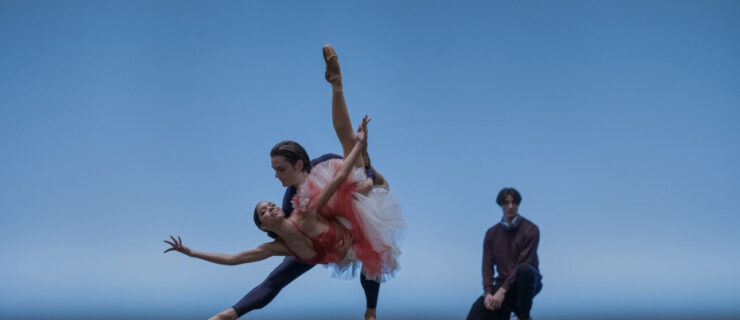Your Aches and Pains Addressed: Blisters
Blisters are certainly a sign of lots of hard work and dancing. But it can be next to impossible for a dancer to do her job (especially on pointe) if they aren’t allowed to heal properly. DS spoke with podiatrist Dr. Ronald Werter about the best ways to prevent, cope with and treat blisters.
What are they?
Blisters are small pockets of liquid that form under the skin’s outer layer after it becomes damaged, usually by forceful rubbing.
What causes them?
Long, grueling rehearsals + dance shoes=a lot of sweat and friction—the perfect recipe for disaster if you don’t take preventive measures.
How to deal
“Don’t burst a blister. That’s opening a sterile
internal area to the chance of outside infection,”
Werter says. If you must drain the blister, clean the area with alcohol and sterilize a needle or pin with a flame. If the fluid inside is bloody or pus-like, seek medical attention; this could indicate an infection.
(via Thinkstock)
Blister Dos and Don’ts
DON’T: pick at or irritate a fresh blister. “You never want to take the top layer of skin off a newly formed blister. The raw skin underneath is more painful than the blister itself,” Werter says.
DO: use over-the-counter treatments to expedite healing. Werter recommends applying an antibiotic ointment, like Neosporin or Bacitracin, and then padding the blister and surrounding area with gauze or lamb’s wool.
DO: pay attention to the fabric of your tights. If you have particularly sweaty feet, Werter recommends synthetic blends. “Synthetic fabrics wick away moisture.”
Fire and (/or) Ice
Ouch!
You rolled your ankle in rehearsal. Should you reach for the ice pack or the heating pad? Is one better in certain situations? (Hint: Yes!) We spoke to physical therapist Jennifer Connors of JumpStart Physical Therapy, whose team works closely with the dancers of Walnut Hill School for the Arts, in Natick, MA, about when to go hot and when to go cold.
(via Thinkstock)
Ice, Ice Baby
If you suffer an acute injury, like a sprain or a muscle pull, Connors suggests icing immediately. “Ice is most beneficial in the first 48 to 72 hours,” she says. “Applying a bag of crushed ice for 10 to 20 minutes every hour decreases pain and swelling.” Connors also recommends following the “PRICE” motto: Protect, rest, ice, compress, elevate. “Don’t ice an injury and immediately go back to dancing,” she says. Make sure to rest so it doesn’t get worse.
Hot Stuff
If you’re experiencing chronic pain—maybe a neck or back ache in the weeks following intense rehearsals—heat will help relax your muscles. Heat can also be helpful if you’re about to get a massage—it might even increase the benefits. However, don’t use heat immediately after hurting yourself. “Heat increases circulation and blood flow to an area, which is why you shouldn’t use it right after an injury. It’ll greatly contribute to the inflammatory phase,” Connors says. If after 72 hours swelling around the injury has gone down, you know it’s safe to use a heating pad. Connors advises applying heat for just under 15 minutes, and monitoring the temperature.
It’s best to work with your teachers, physical therapists and doctors to assess what’s causing your pain so that you aren’t simply icing or heating an injury that needs medical attention. Connors emphasizes getting screened by the appropriate health-care professionals if something continues to bother you.
Did You Know?
#SleepHack!
Tossing and turning after a long day at the studio? Falling asleep can be as easy as one, two, free—your foot, that is. Feet contain blood vessels called the arteriovenous
anastomoses, which help regulate temperature—a key factor in falling asleep. So slip one foot out of the covers and you’ll slip into a slumber.



